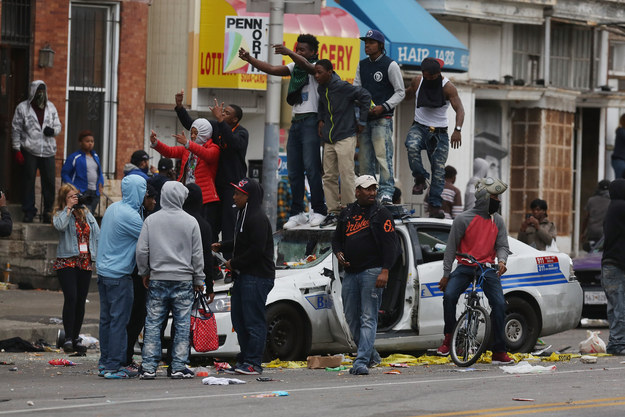Stuff Black People Don’t Like
May 2, 2016
A community with a surplus of social capital is what we call a high-trust society.
A community with a surplus of blacks? You have to manage expectations for what classifies as a reason to celebrate. [Safety rally and march to mark 200 days without a homicide in Butler Tarkington neighborhood, Indy Star, May 1, 2016]:
Residents in the Butler Tarkington neighborhood are marking a milestone in their fight against crime. The north side area reached 200 days without a homicide Sunday.
A safety rally and march are planned to celebrate peace.
The 200-day streak comes after a violent 2015. People living in the Butler Tarkington neighborhood were forced to deal with a spike in fatal shootings. One of the victims was 10-year-old Deshaun Swanson, who was killed in a drive-by shooting. The numerous cases led to an outcry from the community.
Neighbors joined forces with the Indy Ten Point Coalition to put a stop to the violence. Indianapolis Metro Police also stepped up patrols in the area.
“It’s just been remarkable what has happened in this neighborhood, ” said Rev. Charles Harrison, from the Indy Ten Point Coalition. “The residents were saying they were tired of the violence, the drug trafficking in the neighborhood and they were just not going to tolerate that anymore.”
One resident says the changing atmosphere on his block is clear.
“Last year, we wouldn’t haven’t been able to stand out on this corner without violent threats,” said Wallace Nash. “As you can see, the neighborhood is definitely quiet, peaceful, getting back to how it should be.”
Lowered expectations, anyone?
And just what might the violence in this Indianapolis neighborhood be blamed?
Blacks, of course, would be the correct answer, but in our world, cutting the Gordian Knot of the problem is far to simple a solution. [Indy neighborhood associations pushing to see “streetlights” campaign promise fulfilled, Indy Star, April 24, 2016]:
Across the city, some neighborhood leaders are concerned that the poorly lit streets they live on are inviting crime.
“Once it gets dark, there are a lot of streets and alleys and they’re pretty dark once it becomes nightfall,” former Butler-Tarkington Neighborhood Association president Ted Feeney says.
He believes poorly lit streets and alleys are partly to blame for the neighborhood’s increase in crime over the last several months.
“A couple homicides from last fall were actually in alleyways and it was pitch black dark,” Feeney says.
To solve the problem, Feeney says he and other association members plan to walk every street in the neighborhood every week to show Indianapolis Power and Light and city officials where lighting needs improvement.
“The process right now is pretty time intensive,” Feeney says. “Is there a way that we can shorten that and fast track this? Because it can help neighborhoods.”
Help would be welcome in many parts of the city. Early Saturday morning, one person was shot and killed near 39th Place and Post Road. Two more people were hurt in a shooting on the southwest side.
While Feeney acknowledges lights won’t deter all criminals, he feels certain they will help.
“It takes away the risk for bad things to happen in the neighborhood,” Feeney says.
A community with a surplus of social capital is what we call a high-trust society. An insufficient amount of streetlights would hardly be the catalyst for a crime epidemic, because the necessary ingredient for such criminality would still be absent.
The ingredient, of course, being black people.

